Having sent numerous emails over the last 18 months or so sharing stories and locations with fellow haikyo/urban exploration fans Mike (Michael John Grist), Mike (Mike’s Blender) and, erm, Mike (Gakuranman), the chance to actually get together on a trip finally presented itself, culminating in a two day road trip covering the known, and not so known, roads of Gunma and Nagano; first and foremost on our minds being the Mount Asama Volcano Museum — a decidedly bleak looking structure somewhat precariously perched on one of the many mountains looking up to the one time tourist spot’s not exactly insubstantial namesake.
The slowly decaying building creating a strangely serene and yet at the same time almost post-apocalyptic scene.
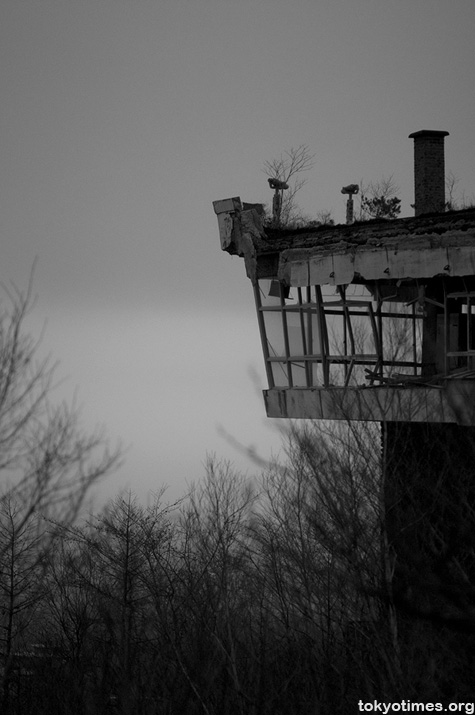
A feeling that continues as one gradually approaches.
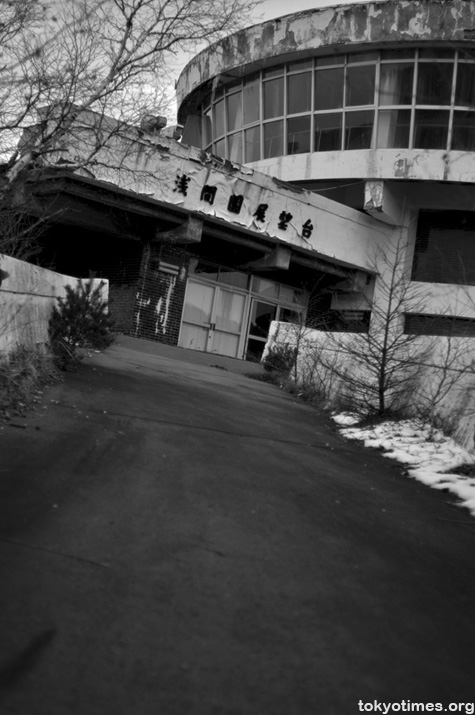
Its wonderfully weatherworn exterior damaged due to the extremely exposed location.
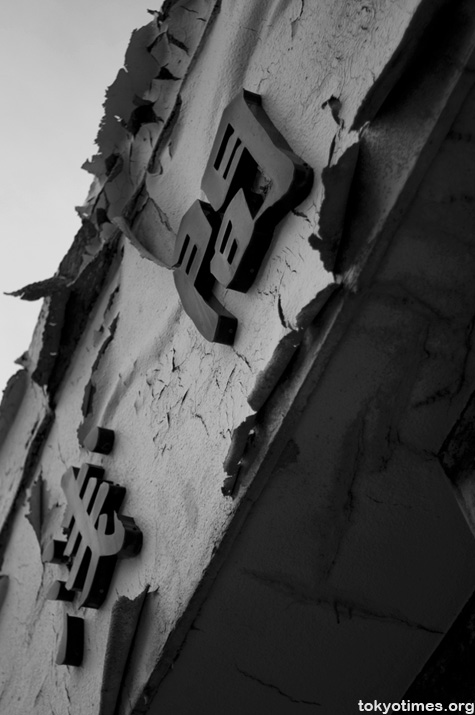
And more than likely the marvellously positioned museum’s close proximity to a still very much live volcano.
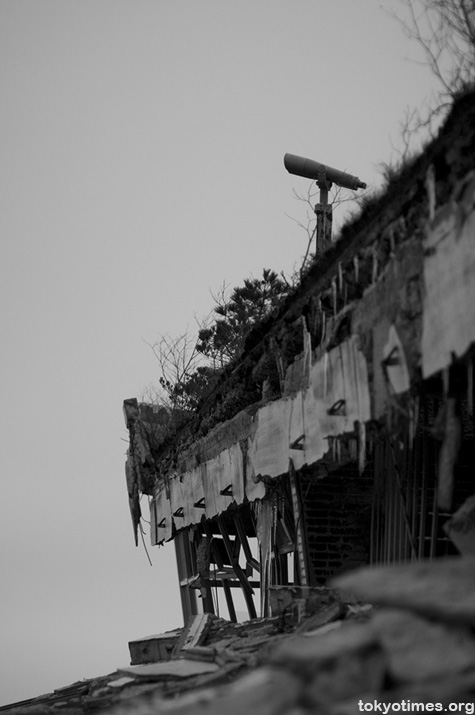
Some early snow on the roof already signalling what’s to come in the ensuing months,
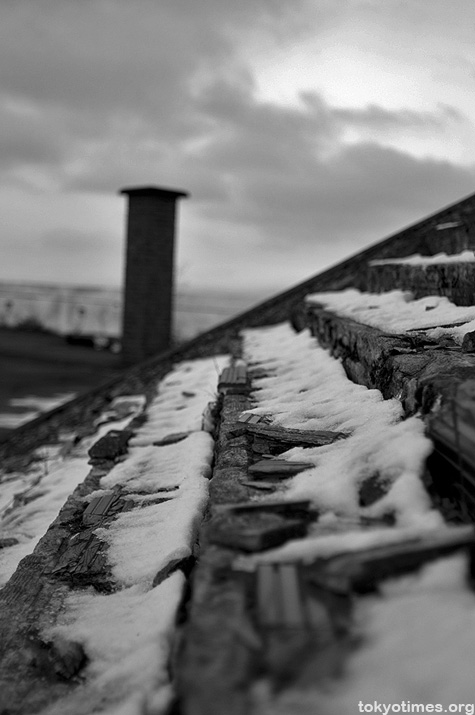
along with signs inside of what could be a combination of both vandal and volcanic activity.
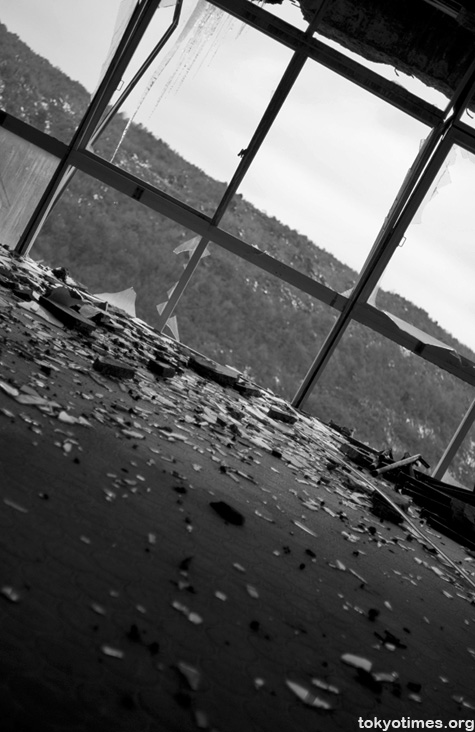
The latter at least creating a situation that may well have played some part in the people who once worked there walking out.
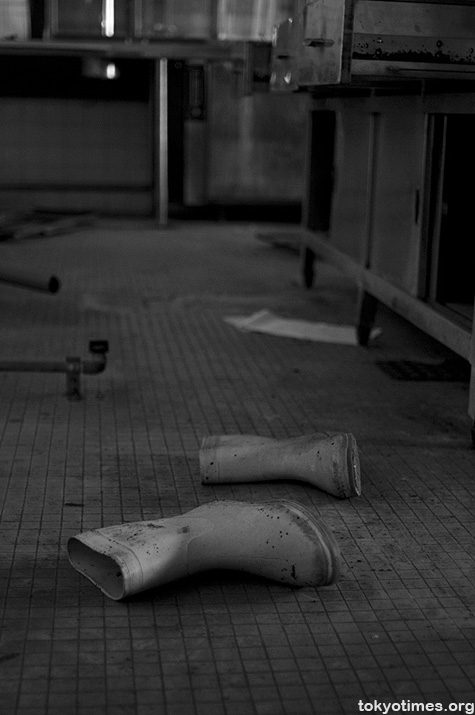
Leaving only the lonely binoculars to rather forlornly look out onto the landscape.
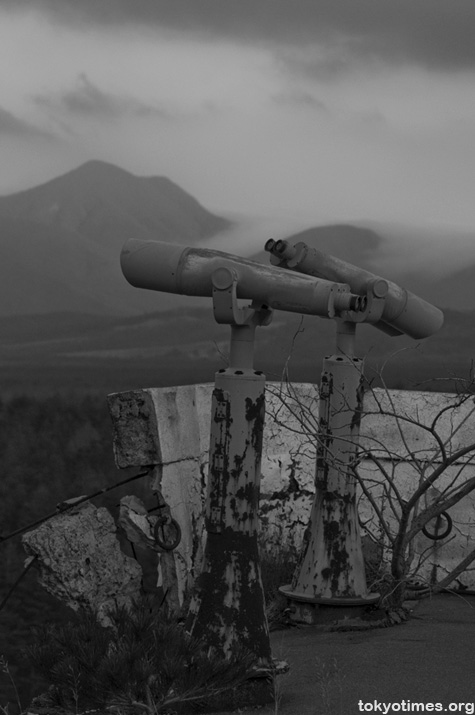
For more of a look at the museum, here, in part 2, I take a closer and in colour look at the interior, along with the various odds and sods not so lovingly left behind.
Jason Collin Photography says
I like the composition of the second shot with the driveway leading up to the Volc Museum very much. I like being given the view of the roof as well, something none of us, I believe, had previously photographed.
Are you using Nik Silver Efex Pro for your black & white conversions? If not, why not??
Lee says
Thanks Jason, I was pleased with the way that one came out as well. By the roof I meant the viewing platform/first floor roof, which you must have been on, and the picture is of the steps leading up to the higher of the two observation areas.
And no, I’m not using Nik Silver Efex Pro, only photoshop, but now that you’ve mentioned it I’ll check it out.
Mike says
Wonderful post Lee. I really like your take on this. The B+W produces yet another story different to my own and the other two Mikes. I especially liked your focus on the weathering of the museum and the crumbling signs and walkways 😀
Lee says
Thanks Mike. Glad you like it. I wanted to try something a bit different, and overall I’m pleased with the way they came out.
MJG says
Great stuff Lee, it does seem a departure for you in more ways than the black and white- longer paragraphs with less alliteration, and the photos themselves capture some of the whole feel of the place more than I think your shots usually do- as I often think your shots are of things more than they are of places. Being a fan of the broad strokes of places, I’m loving these shots. And all portrait style! The opposite of me, shooting all the time in landscape.
Get yourself a wide-angle lens and the whole world will open up 😉
Lee says
Cheers Mike. Yeah, it’s still what’s in the rooms/buildings that interests me the most, but this place was somehow different. A combination of its shape and location I think along with a real sense of isolation. There really is something special about it.
A slightly different write up on the other hand wasn’t a conscious decision, but the need to describe how the trip came about necessitated a bit of a change. And the alliteration I usually favour is only there to give the site some distinctiveness, so I was happy to give it a bit of a rest. Although to be really honest, I do like the challenge it presents!
Back to the pictures though, I must admit a wide angle is tempting, but I am a little worried if I’ll use it enough to warrant the outlay. And I do have my eye on the 50mm f/1.4. Pity it’s not a lot cheaper…
Jason Collin Photography says
These images looked wide to me, also mixed with some close-ups. Changing lenses inside a haikyo is risky with all the dust and likely asbestos, so using one of any kind of lens can be restrictive. Problem solved if you are bringing two cameras into the haikyo with you, or if conditions are ok for making a quick lens change.
Portrait orientation was refreshing.
My only suggestion is to run the shots through a “pro contrast” or “white neutralizer” filter to bring out true whites in the shots, again, these are just one click steps in Nik’s fabulous Color Efex Pro 3. Don’t know how many steps it would take in Photoshop. Can’t say enough about the Nik suite of plugins that greatly speeds up my editing workflow.
I heard the Nikkor 50mm F1.4G lens is pretty good and even tried a quick few snaps with it.
C says
I follow your posts almost religiously and Id have to these pictures are probably the best shots I have seen from your haikyo series. Truly excellent!!
Lee says
Thank you very much! Being quite happy with them myself, it’s very nice indeed to know that others agree.
mikesblender says
Great pics Lee, your leading one is definitely my favourite.
Black and white, interesting angles, close ups, all suit the haikyo mood very well! I’m taking notes!
Lee says
Considering the high quality of your museum photos Mike, that’s very high praise indeed. Thank you!
The first picture is my favourite too, and it was also the image that prompted me to explore the black and white route — something I’d never even considered before. No idea why…
S_in_shanghai says
Very nice pictures Lee. Actually I especially like the composition of the first one, although I like a bit higher contrast in the B&W. The one with the snow is also really good.
/S
Lee says
Thanks a lot! Same as in regards the first picture. Definitely my favourite. And likewise as far as high contrast goes, although toning it down a little seemed to work better for these pics for some reason.
thejapaneseeye says
It was interesting to read across the different posts and see peoples different takes on the place, I cant help but think that four people must have diluted the experience somewhat though?
You have managed to the catch the weathering of the place really well in the outside shots and that is top one is very well composed. These shots go well with your usually close ups of which I am big fan (where are the rest here!), just because they give more storytelling to the place, have tried to do this on my last haikyo, and set myself project of creating a photo essay for each haikyo I visit.
With regards to wide-angle lens, I had the same debate in the summer, but thought living in tokyo, would I use it so much, if it was cheaper it wouldnt be a problem, in the end I bought a 24mm 2.8 Ai-S for 16000 which although it won’t get the same width is a sharp little prime.
Lee says
Glad you like the more usual close-ups, and I’ll post some of them next week, although to be honest there wasn’t a great deal to photograph on the inside. Well, a great deal of interest. Its possibly the only haikyo I’ve been to where the actual structure of the place has interested me far more than its contents. Probably a combination of it being quite a unique structure, and , as I said, not that many signs of past life, on the inside.
Strangely enough the experience wasn’t really watered down at all, as we pretty much all entered at different points and at slightly different times, meaning for me at least I didn’t really meet any of the others until I’d done most of my exploring. Plus it was good to share some of the more interesting stuff with other people.
Yeah, I still don’t know what to do in regards my next lens, although it sounds like you came up with a pretty good compromise. That said, if I’m being really honest with myself, I’ll probably end up going for the 50mm f/1.4, as I’m pretty sure I’d get more use out of that than a wide angle.
Hummy says
These are gorgeous photos!